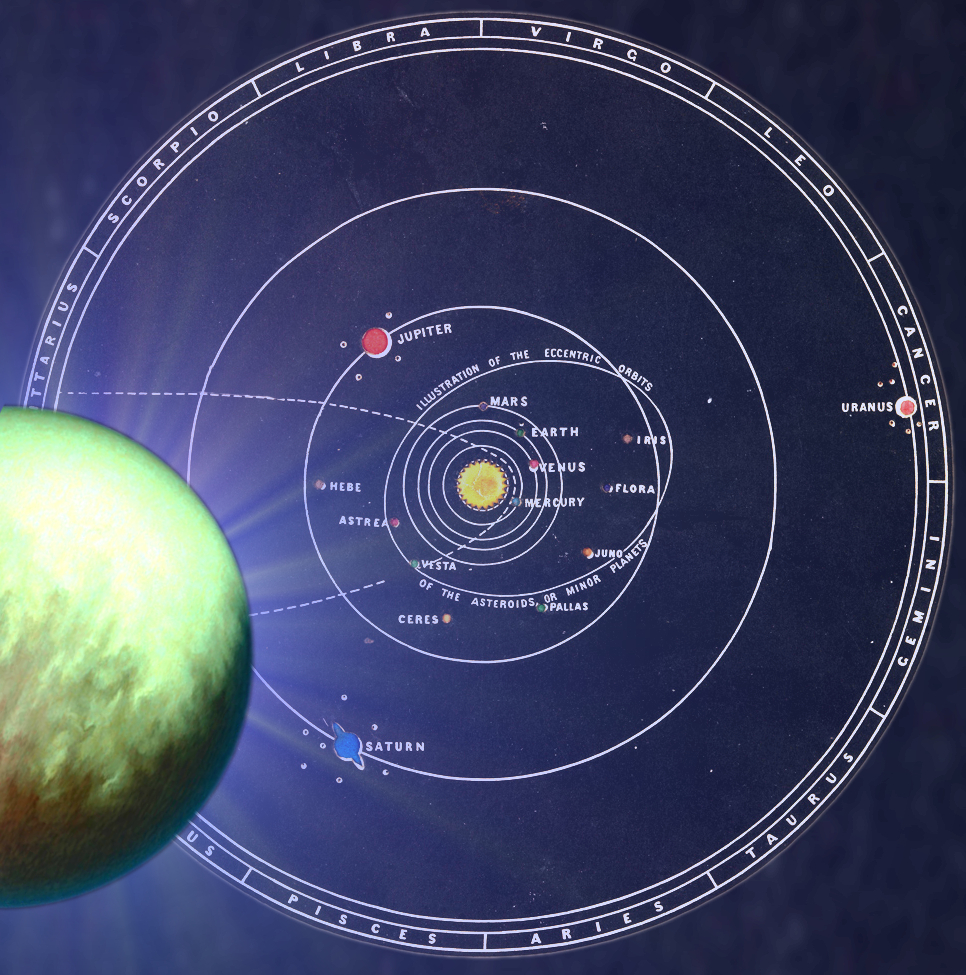Ninth planet's past probed
 Star-gazers continue to seek an elusive ninth planet in our solar system.
Star-gazers continue to seek an elusive ninth planet in our solar system.
Earlier this year scientists presented evidence for Planet Nine, a planet similar to Neptune that appears to be travelling in an elliptical orbit 10 times further from the Sun than Pluto.
Their evidence was based on the movements of known objects in the outer solar system. Researchers modelled possible causes of seemingly random movements, and found that they matched what might happen if a massive planet was affecting the path of the much smaller objects.
“The evidence points to Planet Nine existing, but we can't explain for certain how it was produced,” says Harvard astronomer Gongjie Li, lead author on a new paper accepted for publication in the Astrophysical Journal Letters.
Planet Nine appears to circle our Sun at a distance of about 60 billion to 220 billion kilometres; far beyond all the other planets.
Experts now wonder whether Planet Nine formed in its current position, or did it form elsewhere before finding its unusual orbit.
A team from Harvard University and the University of Michigan have conducted millions of computer simulations in order to consider three possibilities.
The first and most likely involves a passing star that tugs Planet Nine outward. Such an interaction would not only nudge the planet into a wider orbit but also make that orbit more elliptical.
Since the Sun formed in a star cluster with several thousand neighbours, such stellar encounters were more common in the early history of our solar system.
However, an interloping star is more likely to pull Planet Nine away completely and eject it from the solar system.
The research team found only a 10 per cent probability, at best, of Planet Nine landing in its current orbit. Moreover, the planet would have had to start at an improbably large distance to begin with.
Astronomer Scott Kenyon says he may have solved that difficulty.
Kenyon has used computer simulations to construct plausible scenarios for the formation of Planet Nine in a wide orbit.
“The simplest solution is for the solar system to make an extra gas giant,” he said.
They propose that Planet Nine formed much closer to the Sun and then interacted with the other gas giants, particularly Jupiter and Saturn. A series of gravitational kicks then could have boosted the planet into a larger and more elliptical orbit over time.
“Think of it like pushing a kid on a swing. If you give them a shove at the right time, over and over, they'll go higher and higher,” explains Kenyon.
“Then the challenge becomes not shoving the planet so much that you eject it from the solar system.”
That could be avoided by interactions with the solar system's gaseous disk, he suggests.
Experts have also examined the possibility that Planet Nine formed at a great distance to begin with.
They find that the right combination of initial disk mass and disk lifetime could potentially create Planet Nine in time for it to be nudged by a passing star.
“The nice thing about these scenarios is that they're observationally testable,” Kenyon points out.
“A scattered gas giant will look like a cold Neptune, while a planet that formed in place will resemble a giant Pluto with no gas.”
Finally, Li and Adams looked at two wild possibilities: that Planet Nine is an exoplanet that was captured from a passing star system, or a free-floating planet that was captured when it drifted close by our solar system.
However, they conclude that the chances of either scenario are less than 2 percent.
These findings are covered in three papers, accessible here, here and here.







 Print
Print